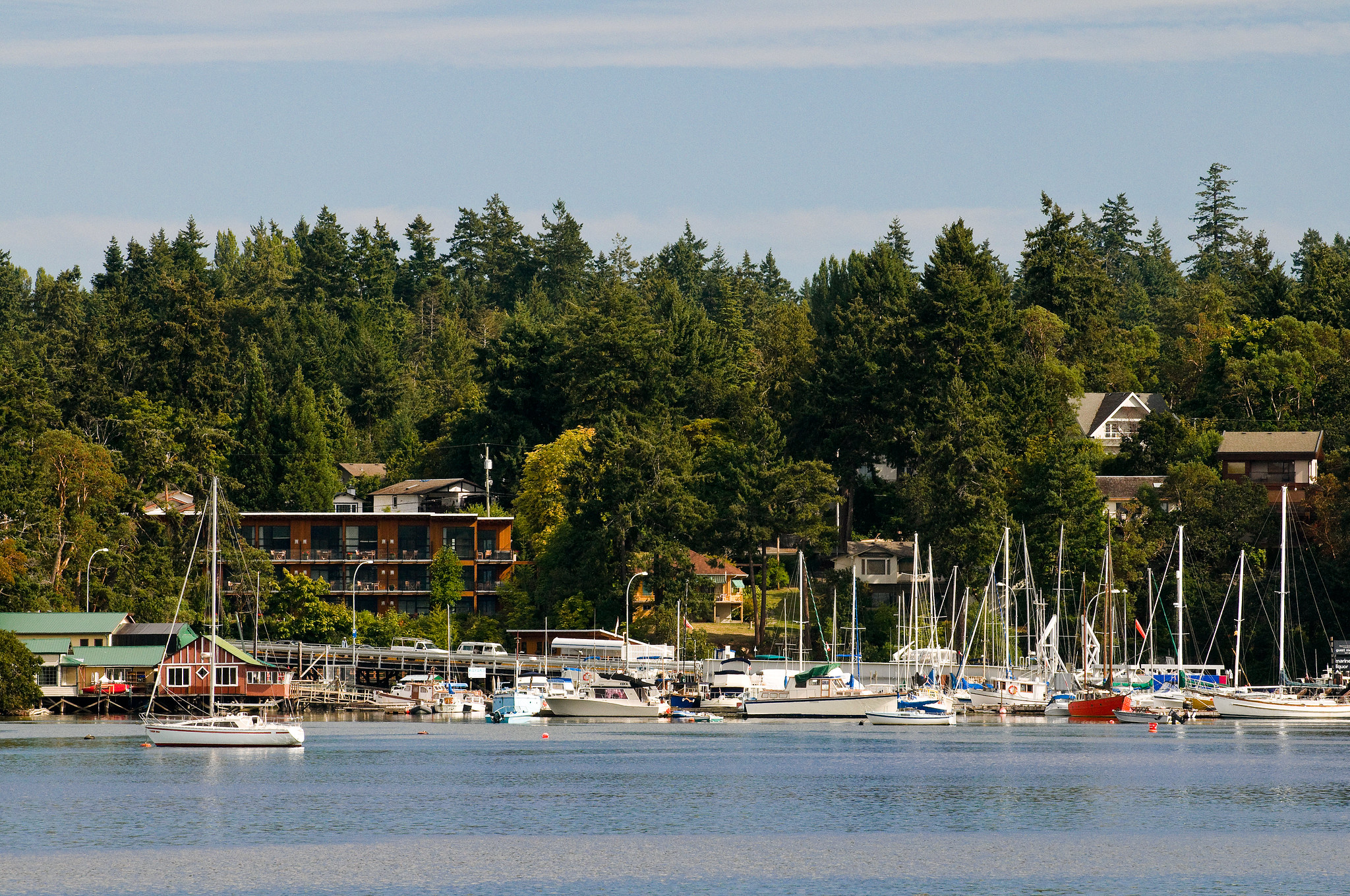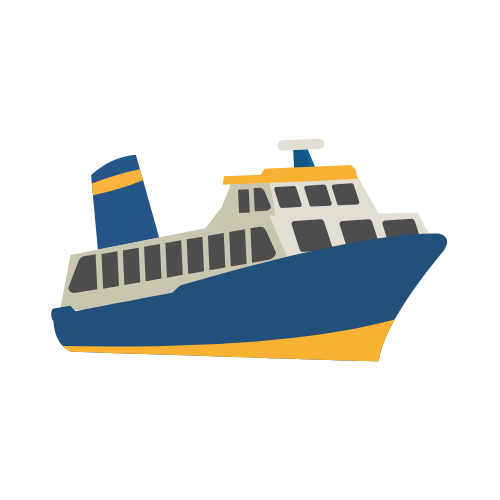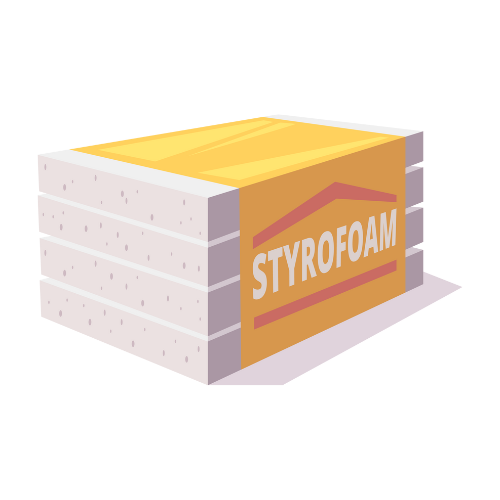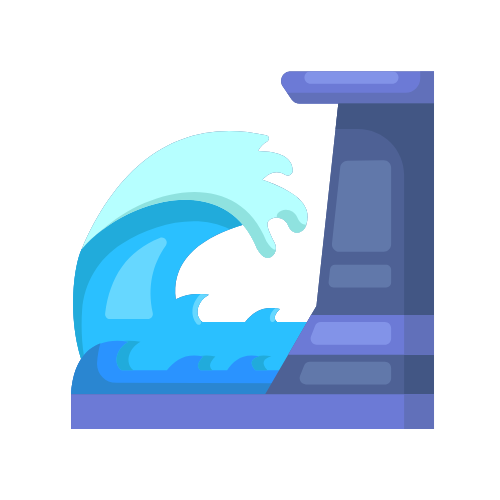
British Columbia released its long-anticipated Coastal Marine Strategy last summer, and is currently planning its implementation. The Strategy is an overarching policy framework for managing coastal and marine issues, listing 116 specific activities aimed at advancing its themes of a healthy coast, resilience to climate change, thriving coastal economies and communities, and informed governance.
Like many policy documents, it runs the risk of seeming inaccessible and intangible – what does its vision of “a diverse, productive, and resilient coastal marine environment” mean on the ground (or, more appropriately, in the water)?
Below, we discuss five specific issues facing the BC coast, and what the BC Coastal Marine Strategy commits to doing about them.
Jump to:

Derelict Vessels |
What’s the issue?
“Derelict vessels” are lost, abandoned or wrecked vessels which are left to deteriorate in the water or on the shore. They pose risks to ecosystems by contaminating water, and to human safety by blocking navigation. They also impact the many sectors that depend on the ocean, including fishing, tourism and recreation.
This is an issue across coastal BC, but especially in Central and Southern Vancouver Island and around Vancouver. For example, in March 2025, the “McBarge” – which had been a floating restaurant on False Creek in the 1980s – was in the news when it sunk in Maple Ridge. Over 1,400 derelict or abandoned vessels are awaiting cleanup in coastal BC.
Why has it been hard to fix?
Derelict vessel clean-up is difficult due to an outdated licensing system that makes tracking ownership of vessels difficult, as well as high costs to properly dispose of vessels and insufficient capacity to handle disposal and recycling, and jurisdictional complexity.
Government entities with jurisdiction at some point in the tracking, reporting, enforcement and disposal process include: the BC Ministry of Environment and Parks; the BC Ministry of Water, Land and Resource Stewardship; port authorities; local governments; Fisheries and Oceans Canada; the Canadian Coast Guard; and Transport Canada. The First Nation on whose territory the derelict vessel is located may also exercise its inherent and constitutional jurisdiction.
How can the Coastal Marine Strategy help solve it?
In the BC Coastal Marine Strategy, the provincial government has committed to do more to address the issue of derelict vessels. British Columbia has committed to:
- Examine the life cycle of boats to identify waste prevention, reduction and end-of-life opportunities.
- Develop a long-term vision for the Clean Coast, Clean Waters initiative that supports the prevention, cleanup, monitoring, removal, recycling and disposal of polluting marine debris and derelict vessels while providing employment opportunities in coastal communities.
- Support additional coastal cleanups of plastics and debris, including actions to address abandoned and derelict trespass structures and derelict vessels in the intertidal zone.
These will work in concert with existing DFO and Transport Canada initiatives.

Styrofoam Pollution |
What’s the issue?
Expanded polystyrene (EPS), known as Styrofoam, is the most common flotation material on the BC coast, used in marine infrastructure such as docks, marinas and aquaculture operations.
However, it is also one of the most commonly found materials collected by clean-up groups on remote British Columbia beaches. That is because EPS degrades over time and breaks off and enters the marine environment. EPS is toxic and can harm marine life and seafood resources, as well as helping to spread invasive species and causing navigation hazards for boats. The clean-up of this pollution also imposes costs which are borne by taxpayers or non-profit organizations.
Thankfully, there are alternatives to EPS floats, including many manufactured right here in British Columbia. These all have a longer lifespan than EPS flotation, which only lasts 15 years – some alternatives last up to 60 years.
Why has it been hard to fix?
EPS floats are relatively inexpensive – if you ignore their costs to society – so the alternatives will cost more upfront to install. However, they last longer, and they will cause significantly less environmental damage over the long term.
How can the Coastal Marine Strategy help solve it?
In the BC Coastal Marine Strategy, the provincial government has committed to:
- Prohibit the use of polystyrene in future marine infrastructure construction and collaborate with the federal government to promote replacing existing polystyrene marine floats with environmentally friendly alternatives.

Shellfish Bed Closures |
What’s the issue?
Hundreds of kilometres of coastline in British Columbia have been closed long-term to shellfish harvesting for sanitary reasons. In Coles Bay, on the Saanich Peninsula on Vancouver Island, within the territory of the Pauquachin First Nation, shellfish harvesting has been closed since 1997. This is due to poor water quality – primarily from pollution from septic systems, agricultural runoff, municipal storm water systems, recreational and commercial boats, sewage and livestock.
The closure of shellfish beds not only prevents First Nations like Pauquachin from exercising their Treaty and Aboriginal rights, but it also impacts the culture, health, food security and economies of communities throughout coastal British Columbia.
Why has it been hard to fix?
Pauquachin has pointed out that in Washington State, the law requires that within 180 days of shellfish beds being closed, the government must implement a program to address the pollution. No equivalent requirement exists in policy or law in British Columbia.
Without such a requirement, federal, provincial and local governments have tended to ignore shellfish bed contamination and closures have remained in place for decades.
How can the Coastal Marine Strategy help solve it?
In the BC Coastal Marine Strategy, the provincial government has committed to:
- Co-create a “Healthy Shellfish Initiative” with First Nations partners, modelled off successful programs and pollution correction legislation in Washington State. Set specific goals for remediation, in partnership with others. Identify pilot projects that can inform a coast-wide program flexible enough to meet distinct needs.
- Take steps to reduce marine-based sources of pollution that directly impact the safety of traditional shellfish harvesting areas and marine terrestrial foods.
- Advocate for changes to the federal Canadian Shellfish Sanitation Program, including more funding to support increased water quality testing and pollution remediation.

Hardened Shorelines |
What’s the issue?
Shoreline habitats, such as spawning beaches and salt marshes, play an important environmental role. They are critical to the food web, and they sequester carbon, protect communities from flooding and storms, and help maintain local food security. However, these habitats have been declining at an alarming rate; upwards of 70% of salt marshes in British Columbia have been either lost or degraded.
A significant cause of the loss of shoreline habitats is hard (or armoured) shorelines, such as seawalls, bulkheads, riprap and breakwaters, which are found on much of BC’s developed coastline. Hard shorelines, which are generally put in place to prevent erosion of the upland property, disrupt natural shoreline processes and destroy important habitat.
This is due to “coastal squeeze”, whereby sea level rise moves the intertidal area upland, but a structure is there to prevent the intertidal area from shifting – basically, the habitat is squeezed out. Hard shorelines also break up the connection between the ocean and land and disrupt the movement of some species. They introduce contaminants into the water, and despite being put in place to prevent upland erosion, they can actually exacerbate erosion in seaward areas – as well as “flanking erosion” of adjacent properties’ shorelines.
Natural or “green” shorelines are alternatives to hard structures. Natural shorelines do not suffer from the issues described above, and they provide additional benefits: they buffer the impact of storm surges (which are intensified by climate change) by absorbing wave energy, prevent erosion, reduce flooding, filter pollutants and are less expensive to install and maintain.
Why has it been hard to fix?
Currently, the Province mostly leaves it up to local governments to enact (or not enact) restrictions on coastal development, including hard armoured structures. This has led to an inconsistent patchwork of different rules – despite shorelines and shoreline habitats being connected.
Some municipalities have created Development Permit Areas along their shorelines, with a strict framework for approving development within that area, that take into account sea level rise. Other municipalities have no framework at all. Often, First Nations involvement in this patchwork of regulation is very limited.
To promote natural shorelines, the Stewardship Centre for British Columbia has developed Green Shores programs that provide information and technical information to developers, landowners and local governments for implementing green shorelines. The Province has also collaborated with Green Shores to establish a pilot project to expedite the approval of nature-based shorelines.
How can the Coastal Marine Strategy help solve it?
In the BC Coastal Marine Strategy, British Columbia has committed to:
- Investigate and consider incentives to homeowners and developers to maintain or restore natural shorelines (such as through grants and rebates, tax relief and permitting efficiencies).
- Improve access to Green Shores training, education and technical support to help homeowners, developers and local governments implement nature-based solutions to a high standard. Explore the establishment of a First Nations Green Shores working group to bring an Indigenous lens to the program.
- Support research to better understand the benefits of nature-based solutions for addressing climate impacts along shorelines.
- Expand the implementation of BC’s expedited permit process for nature-based shoreline projects.
- Replace hard armoured approaches with soft shoreline stabilization techniques in coastal marine parks and protected areas managed by the provincial government, where appropriate.
British Columbia also commits to develop a proposal for coastal marine legislation, in partnership with First Nations, which we think should provide greater tools and requirements to protect shorelines from harmful coastal developments.

Blue Carbon: Carbon Stored in Coastal Ecosystems |
What’s the issue?
Blue carbon is the carbon captured and stored by coastal and marine ecosystems, including kelp forests, seagrass meadows, salt marshes and soft sediments (mud, sand and silt). Coastal and marine ecosystems store carbon at a much higher rate than forests on land – up to five times more in an area of a similar size.
Destroying these ecosystems releases that stored carbon into the atmosphere, contributing to climate change. And yet, this is exactly what has happened to coastal and marine ecosystems in BC: development has caused 70-83% of the salt marshes in the province to be lost or degraded, with a similar rate for wetlands (though these figures are decades old and there are significant data gaps preventing a precise, current estimate).
Why has it been hard to fix?
Coastal areas have not been mapped to identify the areas with the most blue carbon stored or with the highest blue carbon storage potential. And BC does not include blue carbon in its greenhouse gas inventory and reporting.
As a result, BC does not fully consider the carbon sequestration potential of coastal areas when deciding where projects should take place, and in deciding which areas to protect and restore. In addition, coastal ecosystems are often overlooked in climate policy, so BC is missing one of its biggest opportunities to mitigate and adapt to climate change.
How can the Coastal Marine Strategy help solve it?
In the BC Coastal Marine Strategy, the provincial government has committed to:
- Scale up the monitoring of coastal habitats that are critical for maintaining biodiversity, such as kelp beds, eelgrass beds, estuaries, salt marshes and forage fish habitat and use this information to guide management decisions and planning initiatives.
- Assess the rate of coastal habitat loss or degradation.
- Continue to support First Nations-led programs and monitoring systems.
- Maintain and expand partnerships with other governments, research centres and academic institutions.
- Develop and implement a coast-wide aquatic plant research and monitoring network.
- Expand efforts for preventing, detecting, monitoring and managing invasive aquatic plant species…
- Continue to investigate the role of aquatic vegetation in mitigating ocean acidification, buffering against storm surge, storing carbon and contributing to carbon sequestration.
- Map the current and projected future habitat space for seagrass meadows, salt marshes and kelp forests along the coast, and address data needs in current distribution mapping and future habitat suitability models. Set appropriate targets for restoration.
Note also the suite of activities relating to encouraging natural or green shorelines (as they store blue carbon and also provide climate adaptation and biodiversity benefits); details above, under the “Hardened Shorelines” section.
Top photo: Province of BC via Flickr Creative Commons